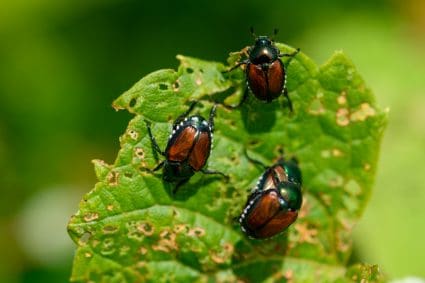
Keeping cats out of planters can be a challenge for many gardeners and indoor plant enthusiasts. Cats are naturally curious creatures and the soft soil in your planters can be an irresistible lure for them. Whether they see your planters as a convenient litter box or a fun place to dig, their activities can be harmful to your plants. This article aims to provide a comprehensive guide to prevent your feline friends from invading your planters.
To keep cats out of planters, use physical barriers like stones, high shelves, or glass cloches. Natural repellents like citrus peels or cat-repellent plants can also deter cats. Commercial products like cat deterrent sprays or physical barriers like chicken wire can be used. Training your cat to avoid the planters, providing an alternative digging spot, or keeping plants out of reach can also be effective.
Why Keep Cats Out of Planters?
Before delving into the solutions, let’s first understand why it’s important to keep cats away from your planters. While it may seem harmless at first, cats can cause significant damage to your plants. Their feces contain nearly twice as much nitrogen as cattle feces, which can potentially burn and damage plants if added to the soil. Additionally, fresh cat feces may also contain harmful bacteria, pathogens, and parasites that can infect and damage your plants. Humans can also be at risk of diseases such as Toxoplasmosis, Salmonella, E. coli, and roundworms if cat excrement is left to decompose in the soil.
Effective Methods to Deter Cats from Planters
There are several effective methods to deter cats from entering planters. These methods range from physical barriers to natural repellents.
Physical Barriers
Physical barriers can be a simple and effective way to keep cats away from your planters. Here are some suggestions:
- Cover the soil with stones or decorative rocks: This prevents cats from digging while allowing water to pass through.
- Install high shelves or wall-mounted planters: This can keep plants out of reach from your cat.
- Use a glass cloche or DIY terrarium: These can act as attractive barriers that protect your plants while still allowing them to be displayed.
- Wrap the pot with double-sided tape: Cats dislike sticky substances, so this can deter them from scratching your planters.
- Place a layer of rocks, tiny pebbles, or pine cones over planters: This creates an uneven surface that cats dislike walking on.
Natural Repellents
Natural repellents can be a safe and non-toxic way to keep cats away from your planters. Here are some examples:
- Citrus peels: Cats tend to dislike the smell of citrus. Placing orange or lemon peels around your planters can help keep cats at bay.
- Cat-repellent plants: Certain plants, such as lavender, rosemary, rue, lemon thyme, and Coleus canina (scaredy cat plant), emit odors that cats find unpleasant. Planting these in your planters can deter cats.
- Homemade sprays: A mix of water and citrus juice (lemon or orange) can be sprayed on the plant’s leaves to deter cats. Another option is to mix hot pepper liquid, lemon juice, and tea of rue to create a spray that can be applied directly to the plants.
Commercially Available Products
There are also commercially available products that can help keep cats out of your planters. These products include cat deterrent sprays, cat repellent granules, motion-activated deterrents, and physical barriers such as chicken wire or bird netting. Make sure to choose non-toxic and organic products that won’t harm your plants or the cats.
Training Cats to Stay Away
Training your cat to stay away from your planters is also an effective strategy. This can be achieved by making the plants unappealing to the cat, using deterrent sprays, creating physical barriers, providing an alternative digging spot, or keeping plants out of reach.
Conclusion
Keeping cats out of planters can be a challenge, but with the right methods and a bit of patience, it is possible. Whether you choose to use physical barriers, natural repellents, commercially available products, or training methods, remember that each cat is different and what works for one may not work for another. So, don’t be afraid to experiment with different methods to find the one that works best for you and your feline friend.
Happy gardening!
Frequently Asked Questions
Are there any specific types of stones or decorative rocks that are best to use as a physical barrier?
There’s no specific type of stone or decorative rock that’s best. The key is to choose something that’s large and heavy enough that a cat can’t easily move it, but small enough that it won’t damage the plant or prevent water from reaching the soil.
Can I use commercial and natural repellents simultaneously?
Yes, you can use both commercial and natural repellents together. However, it’s important to monitor your plants to ensure that they’re not being adversely affected by the combination of repellents.
Will the citrus juice in homemade sprays harm my plants?
Citrus juice can potentially harm some plants if used excessively or if the plant is particularly sensitive. It’s always best to test the spray on a small portion of the plant first, and observe any reactions before applying it to the entire plant.
How long do natural repellents typically last before they need to be replaced or reapplied?
Natural repellents like citrus peels or homemade sprays will typically need to be replaced or reapplied every few days or after rainfall. The exact frequency may vary depending on the specific repellent and the local weather conditions.
Can these methods also keep other animals out of planters?
While these methods are specifically designed for cats, they may also be effective at deterring other animals. However, the effectiveness can vary depending on the specific animal and its behaviors.












